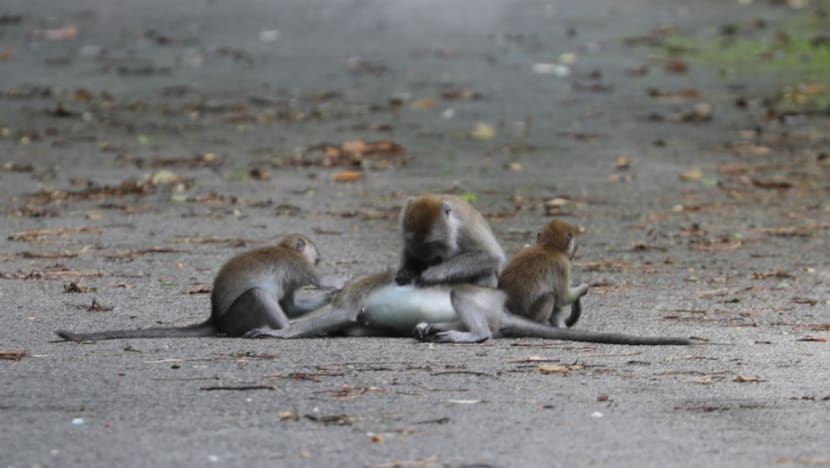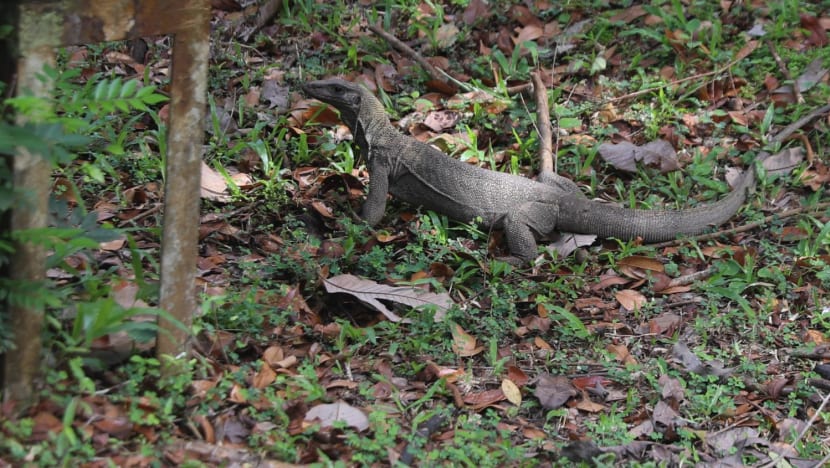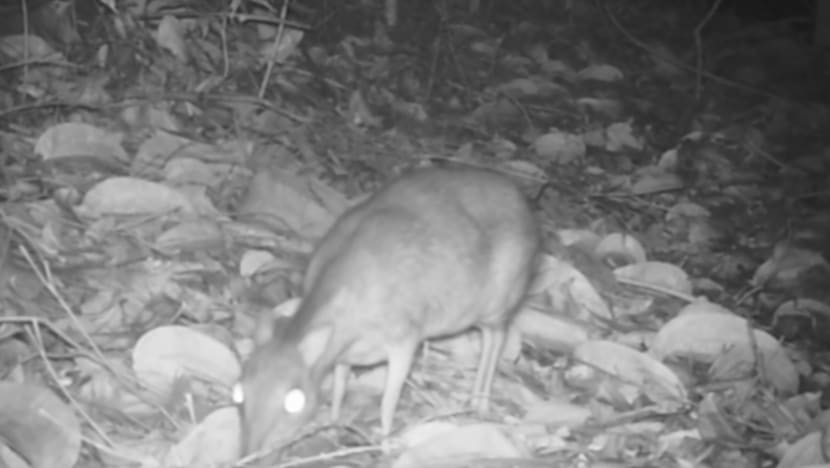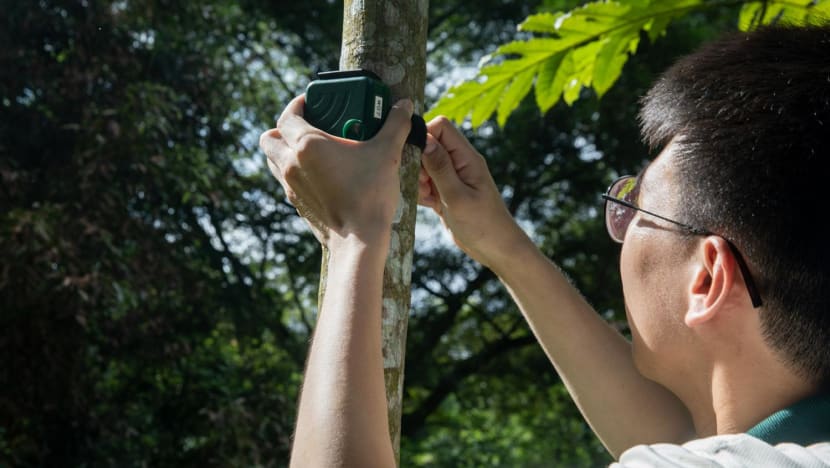Answering the call of the wild: NParks officers who help to manage human-wildlife conflict
SINGAPORE — Otters dawdling in shopping malls, wild boars roaming around heartland shops and crocodiles turning up at popular beaches are becoming more common on this island nation.
As cities expand and natural habitats shrink, wild animals are venturing into human territories more frequently, increasing the need for effective management and co-existence strategies.
These animals have captivated the public's attention with some people reacting favourably towards them, while others are less enthused — highlighting a complex challenge for the National Parks Board (NParks), which manages greenery, biodiversity conservation and animal welfare in Singapore.
TODAY speaks to officers from NParks' Wildlife Management team, which was formed in 2019 and has around 30 staff members working to address public concerns while balancing the needs of wildlife creatures.

FROM SNAKES AND OTTERS, TO BATS AND MACAQUES
Unlike her peers who became teachers or worked in other literary fields, English literature graduate Ms Kerine Leong found herself drawn towards a career that involved caring for animals.
After graduating from Nanyang Technological University (NTU) in 2021, Ms Leong joined NParks as a wildlife outreach officer. She felt like it was the "natural pathway" for her to go into after doing internships at the Society for the Prevention of Cruelty to Animals (SPCA) as an advocacy and education intern and as a part-time keeper at Mandai Zoo.
Her current role at NParks involves managing public feedback on wildlife encounters, as well as doing outreach events to various communities on how to safely respond when one chances upon such creatures.
While it may seem odd to some, Ms Leong said that her job perfectly blends her passion for animals with her academic background.
"I think it's a good mix between the arts and my love for animals. I feel like my English literature degree helps to convey technical information such as wildlife safety measures in a captivating and engaging manner to the public," she said.
Apart from this, Ms Leong also works with grassroots leaders, other government agencies and animal welfare groups to mitigate wildlife-related conflict and come up with win-win policies on animal management.
"For example, for issues related to otters, we work with members of the Otter Working Group which comprises representatives from government agencies, academia and the community to monitor the otter population and develop holistic solutions for otter issues," she said.
While raising awareness and working with other agencies form part of her job, the bulk of her time involves handling feedback from members of the public.
Together with other NParks officers, Ms Leong handled about 9,700 cases of feedback in 2023, although not all reports involved human-wildlife conflict. That number is an increase from the 8,200 calls in 2021 and the 7,900 calls in 2022.
The most common species of animals that individuals seek help for? Snakes and bats, said Ms Leong.
"It can get quite daunting... because the calls that we receive involve different types of wildlife, from snakes and bats to otters. So it was quite challenging because you never really know what and when the next case might come in," she said of manning the NParks duty hotline.
Ms Leong said that officers are required to react quickly in a calm manner and think on their feet.
She also emphasised the delicate balance required of officers who have to navigate human-wildlife conflicts while empathising with members of the public.
"In some cases when people call us to say they have a snake in their house, I have to respond calmly so they don't panic.
"I once had a case where an otter ate a (house owner's) koi fish. The callers got a little bit frustrated so I had to be more patient and understanding and keep in mind that these people had lost their pet koi."
After an officer receives feedback, certified specialists from third party wildlife management companies are activated to attend to the situation.
NParks officers may then personally follow up with the feedback provider on site, or through email or a call if they prefer, and explain to them how to stop future occurrences.
Mr How Choon Beng, group director of wildlife management at NParks, said that when dealing with wildlife like pest birds, long-tailed macaques and crocodiles, among others, NParks considers an array of different factors.
This includes the species’ habitat range, natural behaviour, threats to public safety, animal welfare, as well as the impact on native biodiversity, habitats and the community.
Basing their assessment on these factors, he said that a range of measures may be adopted, including public education, habitat modification to reduce food sources and translation of animals away from urban areas, among other things.
Teaching homeowners about these options as well as how to prevent wildlife from entering their premises is also a part of Ms Leong's job.
For example, she tells homeowners that they can prevent otters from entering by fitting their main entrances with exclusion barriers or closing their windows and avoiding putting food near windows to stop macaques from entering.
Some outreach programmes that Ms Leong has conducted include roadshows for residents moving into new public housing estates near nature areas and conducting programmes for children with the National Library Board.
"There was once when this preschooler came up to me after my talk and told me 'I really enjoyed your talk'. It felt quite nice for someone so young to appreciate my talks," she said.
Ms Leong also said that some animals like snakes "get quite a bad rep" because of how they are portrayed in the movies or shows.
"That's where my team comes in to help educate the public that snakes are very shy (creatures) and they wouldn't really come and bother you if you leave them alone," she said.
"Sometimes feedback providers might be quite against them (the animals) in the beginning, but seeing them change their minds after explaining to them wildlife behaviour is quite a rewarding thing."



WILDLIFE — JUST LIKE REAL-LIFE POKEMONS
As a child, Mr Tay Li Si spent a lot of time playing Pokemon games — which involves searching for different characters, including some elusive ones.
The 27-year-old likens his current role as a researcher in NParks Wildlife Research Management to that of a Pokemon trainer.
"When I was younger, I played a lot of the Pokemon games. That was something that really inspired me because the animals and plants that we have around us are just like real-life Pokemons," said the Environmental Earth Systems Science graduate from NTU.
His work involves conducting a variety of research projects, including field surveys like setting up cameras to monitor wildlife population dynamics.
He also evaluates the effectiveness of human-wildlife conflict mitigation measures, such as crossing structures built to allow animals to traverse nature reserves safely.
This includes a recently concluded study by NParks on wildlife crossings via culverts and roads at Old Upper Thomson Road.
"We have seen that they have been quite effective in facilitating the movement of animals and we do get quite a wide variety of animals using them including rare animals like the Sunda pangolin," he said, adding that the crossings reduce the likelihood of these animals ending up as roadkill.


Since a significant portion of his job involves fieldwork two to four times a week, he has also encountered his fair share of surprises in the forest.
"Sometimes the weather may not be in our favour, sometimes we may take an unfamiliar path (and) a tree may fall. Or you may also come face-to-face with a wild boar or a snake may slither past you," he said.
While these encounters sometimes startle him, he keeps in mind that these animals' first instinct is to run away and they do not mean any harm to humans.
"We are so much bigger than them, so they don't really want to approach us as well. As long as we are calm and collected they will move away on their own."
Despite Singapore's land size, Mr Tay said that unknown to many, the nation is home to a wide variety of interesting wildlife and biodiversity, including the Malayan porcupine, spiny hill terrapin and giant forest ant.
Part of his job is also to share as much information as possible about these animals to foster greater appreciation and understanding among the public.
For example, the Asian Koel, known for its loud mating call — which Singaporeans have frequently complained about and termed as the "uwu" bird — also plays a special role in maintaining the balance of the ecosystem.
"The Asian Koel is known to be a brood parasite of the house crow. So in a way, they help to manage and reduce the population of crows in Singapore," said Mr Tay.
A common question his team is frequently asked about is the population size of different species.
Mr Tay said the question, while seemingly simple, is very difficult to answer and requires a lot of research strategies to collect data to model and estimate the population sizes.
Despite the challenges of the job, Mr Tay said: "Being able to go out and be immersed in nature is something that I wanted to do since I was young. And I'm happy to be able to do this right now."
CORRECTION: An earlier version of this article cited Ms Kerine Leong giving advice to homeowners on ways to prevent intrusions by meerkats, and that she had graduated in 2022. This is incorrect, as she was referring to macaques and she graduated in 2021. We are sorry for the errors.






